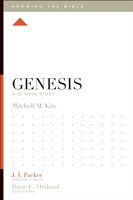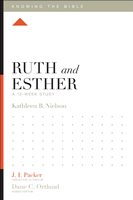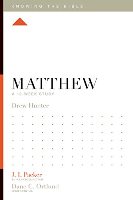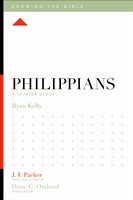Confession
Reading through this series of books has brought about a conversion, of sorts, in my thinking. I confess, I have never much cared for the Bible “study guide” books that have become so common in the last generation or so. The “how would you feel if you were a puppy?” kind of approach that has tended to distinguish them just has not seemed to me to offer much of enduring substance for the soul.
Of course there have been improvements along the way, and I have been encouraged to see this approach employed more successfully here and there. But within minutes of just thumbing through these books my negative attitude was dispelled completely, and then as I read through them more carefully I found myself actually excited about them and thinking of venues in which I could put them to work. These books are both substantive and engaging, and, most significantly, they successfully guide the reader into thoughtful consideration of the biblical text.
As someone was overheard saying, this is not your grandmother’s study guide.
Not your Grandmother’s Study Guide
J.I. Packer and Lane T. Dennis state the goal of this series in the preface:
Knowing the Bible, as the series title indicates, was created to help readers know and understand the meaning, the message, and the God of the Bible.
Of course this is easy to say, but in this case, at least, it is a goal that is superbly accomplished. Simply put, Crossway’s Knowing the Bible series sets a new standard for books in this class. Each volume not only guides the reader through that given portion of Scripture, but along the way it also teaches the reader how to study the Bible.
Structure & Approach
Each book divides its material into 12 units, each successively guiding the reader progressively through that given book of the Bible. The determination to divide into 12 studies obviously has the quarter Sunday School system in mind, but of course it is not limited to that.
Each of the twelve studies follows the same approach, successively as follows:
- The Place of the Passage
- The Big Picture
- Reflection and Discussion
- Gospel Glimpses
- Whole Bible Connections
- Theological Soundings
- Personal Implications
- As You Finish This Unit
Context, whole-Bible themes, exegesis, theological notes of import, personal application and prayer – this is the stuff that ideally marks all profitable Bible study. This is not a mere “read to find a gem here or there” kind of approach but a deliberate attempt to learn the message of the author as it progressively unfolds.
Sample Selections
 Here are a few samples of what you will find. First, this from Mitchell Kim’s volume, Genesis:
Here are a few samples of what you will find. First, this from Mitchell Kim’s volume, Genesis:
The Place of the Passage (Gen. 4-11)
Sometimes sin has immediate consequences; sometimes it does not. In the previous chapter, we saw sin’s immediate consequences. Adam and Eve realized they were naked, they hid from God, and God punished them for their sins. In the next major section in Genesis, we see the longer-term consequences – how it just seems to get worse and worse. The scope of Genesis 4-11 is macro-cosmic (big picture): instead of the earth being filled with representatives of God, the earth is filled with the consequences of sin. Nevertheless, God’s grace abounds even in the face of our sin. Glimpses of his mercy are evident amid this macrocosmic picture of the spread of sin with Seth, Noah, Shem, Ham, and Japheth, and this prepares the way for the microcosmic (zeroed in) focus beginning in chapter 12 on Abraham, who will bring blessing to the nations.

This from Kathleen Nielson’s opening comments on her volume, Ruth & Esther:
Getting Acquainted
Two books in the Bible are named after women: Ruth and Esther. These women lived approximately five centuries apart, one in the period leading up to the kingdom of Israel, and the other following the kingdom’s decline and fall. One was a foreigner who came to the land of Judah; the other was a Jew who lived in a foreign land. God has always been at work in the whole world he made and over which he rules. Both women played crucial roles in the big story of God’s redeeming a people for himself from all the nations through his Son.
This from Lydia Brownback’s volume on Proverbs:
Placing It in the Larger Story
Proverbs advances the overarching theme of the Bible, which is God’s calling, preserving, and shaping of a people for himself. Proverbs advances this theme uniquely through the offer of God-centered wisdom.

This from Drew Hunter’s volume on Matthew:
The Place of the Passage (Matthew 11-13)
Up to this point Matthew has shown us the heart of Jesus’ authoritative teaching (Matthew 5-7) as well as his authoritative ministry and mission (Matthew 8-10). Moving through chapters 11-13 we continue to see mixed responses to Jesus. As opposition more clearly emerges, Jesus begins speaking in parables in order to reveal the truth about his kingdom to some and to hide it from others. Those with “ears to hear” learn that the kingdom has arrived, but not in the way nor in the form that many expected.
My favorites were usually found in the “Gospel Glimpses” and “Whole Bible Connections,” but they are usually longer so I’ll leave those for you to read yourself.
Study Questions
All this of course is to help direct the thinking of the reader as he or she works through the text at hand. The heart of the studies, then, is reached in the study questions. Here is a sample from Ryan Kelly’s volume on Philippians:
 Reflections and Discussion
Reflections and Discussion
The Greek word behind “partnership” (1:5) is sometimes translated “fellowship.” Unfortunately, for many Christians today “fellowship” has connotations of merely getting together for food. So “partnership” is a better word, especially here. Remember, the Philippians prayerfully and financially supported Paul’s missionary work. They shared the gospel and shared in gospel work (see 3 John 6-8 for similar language). Remarkably, they even indirectly shared in Paul’s “imprisonment and … defense and confirmation of the gospel” (v.7). What are some implications of this for you, your church, your giving, etc.?
In verse 6, Paul assures the Philippians that their spiritual state is proof of God’s “good work” in them. He also insists that if God “began a good work” in them, he “will bring it completion.” How might these statements be simultaneously confidence-building and pride-crushing?
Consistently these study questions direct the reader to think carefully about what the text is saying and to consider its theological and personal implications.
Assessment
Of course, as in any series of commentaries, I have no doubt that some individual volumes will stand out above others. But these Bible study guides, each following the same format and each reflecting excellent study on the part of the author, all promise to provide profitable study of God’s Word. In my next small group Bible study series, Knowing the Bible will be our text. Understanding of the text immediately at hand, considered in its own context and in the larger flow of Scripture, with major biblical themes highlighted and gospel glimpses always in focus – what else could we want?
Currently Available
Paperback …
- Genesis, by Mitchell Kim
- Ruth & Esther, by Kathleen B. Nielson
- Psalms, by Douglas Sean O’Donnell
- Proverbs, by Lydia Brownback
- Isaiah, by Drew Hunter
- Matthew, by Drew Hunter
- Mark, by Dane C. Ortlund
- John, by Justin Buzzard
- Acts, by Justin S. Holcomb
- Romans, by Jared Wilson
- Philippians, by Ryan Kelly
- James, by Greg Gilbert
Kindle …
- Genesis, by Mitchell Kim
- Ruth & Esther, by Kathleen B. Nielson
- Psalms, by Douglas Sean O’Donnell
- Proverbs, by Lydia Brownback
- Isaiah, by Drew Hunter
- Matthew, by Drew Hunter
- Mark, by Dane C. Ortlund
- John, by Justin Buzzard
- Acts, by Justin S. Holcomb
- Romans, by Jared Wilson
- Philippians, by Ryan Kelly
- James, by Greg Gilbert
Fred G. Zaspel is one of the pastors at Reformed Baptist Church of Franconia, PA, adjunct professor of Bible at Lancaster Bible College – Center for Urban Theological Studies (CUTS) in Philadelphia, and executive editor here at Books At a Glance.
